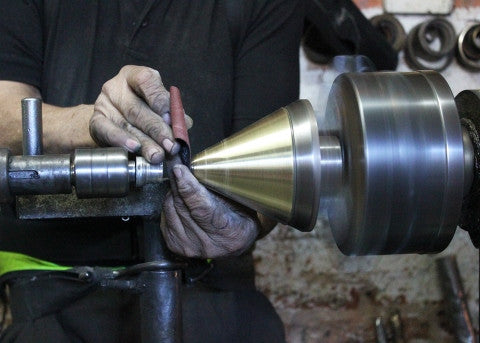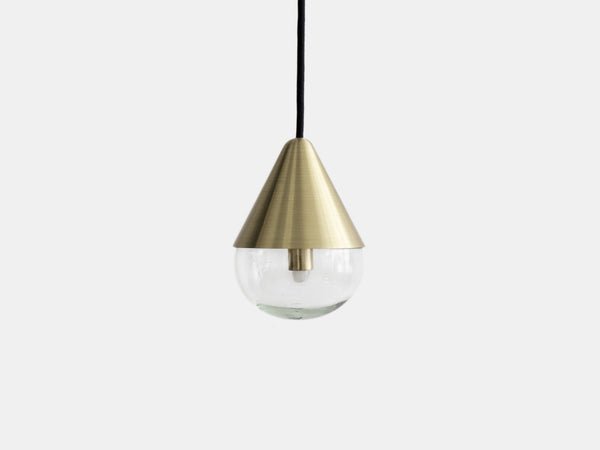The rejection technique is an ancient process involving the formation of asymmetric parts on a mandrel using different tools and spinning rollers while one or more wheels compress the metal in successive passes against the mandrel until obtaining the desired shape. A process similar to that of the potter around a lathe when forming clay. This process requires a lot of dexterity and makes it possible to produce geometric shapes such as cones, tubes or cylinders. At present the process can be done manually or with hydraulic mechanisms controlled by computer. Diversity of metals such as brass, copper and bronze are the raw material in the rejection of metals to unite design, and art in the creation of beautiful utilitarian and ornamental objects: mirrors, figures, candlesticks, jewelers, and lamps that decorate spaces beautifying the environment.Artisan: Familia GonzálezTonalá, Jalisco, México
Text by: Laura Landeros Zuno.
Translation from spanish: Alejandra Vázquez.
Sources: Grandes Maestros del Arte Popular, Primera reimpresión, 2001, Fomento Cultural Banamex, México, D.F., http://artesdemexico.com, http://www.mexicodesconocido.com, https://sites.google.com/site/rechazadoyembutidodemetales/, http://www.buenastareas.com/ensayos/Rechazado-De-Metales/2701763.html, https://bifea.revues.org/4057?lang=en, http://www.piteadofino.com/piteado_fino_113.htm.


